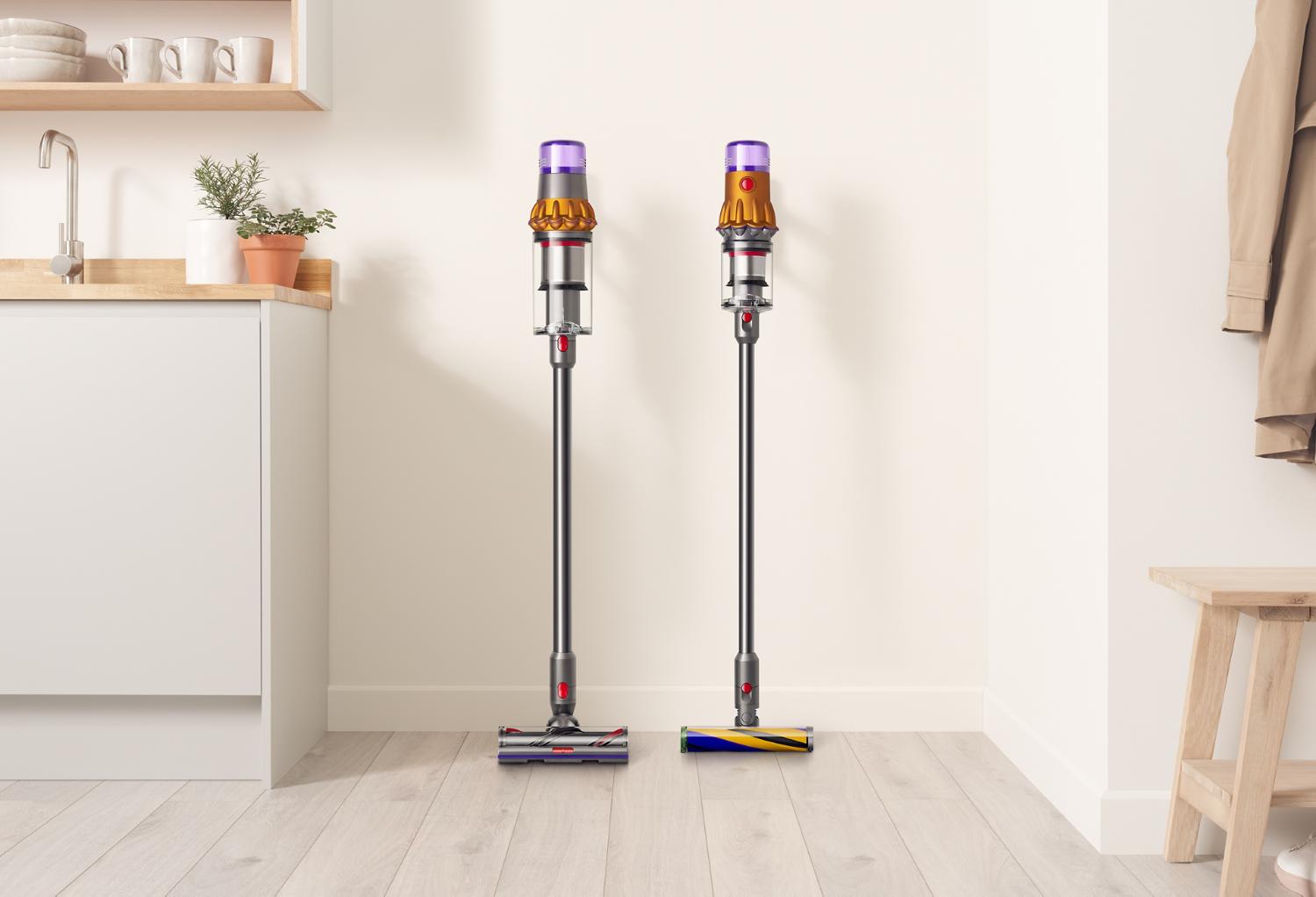How to choose the right vacuum cleaner
From whole-home cleans to tackling pet hair, choosing the right vacuum cleaner for your home can be a challenge. We cover the options and features you need to consider, to find the best one for you.

What makes a good vacuum cleaner?
“At Dyson, we believe that a good vacuum cleaner is all about having the right balance of power and technology to clean your home effectively and efficiently,” says Charlie Park, Vice President, Floorcare. “Our engineers work tirelessly to constantly improve our pioneering technology to engineer solutions for all cleaning needs, without compromising on its performance.”
-

-
1. Strong suction power with no drop in performance
A good vacuum cleaner has strong suction power, with enough Air Watts to remove dust from the different surfaces in your home.
The difficulty in engineering a good vacuum cleaner lies in ensuring that there is no drop in performance throughout the cleaning process. An efficient dust separation system ensures that filters do not get clogged, so there is no loss of suction that will affect the performance of the vacuum cleaner.
2. A powerful and intelligent cleaner head to pick up all types of debris
Dust embeds into carpeted surfaces and electrostatically ‘sticks’ to hard floors. Agitation is required to peel back carpet pile to remove dust in carpets, while carbon fibre removes the static attraction between fine dust and hard floors.
Together with strong suction power, this enables a good vacuum cleaner to pick up small, large, and fine dust debris effectively and efficiently.
For homes with hard floors, our Fluffy Optic™ cleaner head reveals invisible dust, so you can see exactly where to clean. It projects a blade of light to illuminate microscopic particles on floors, making the invisible, visible.
3. An advanced filtration system to capture dust and dirty air
Just as important as picking up dust effectively, is making sure dirty air isnt expelled back into your home. A good vacuum cleaner should be fully sealed and equipped with an advanced, multi-stage filtration system to ensure that all the dust that is picked up remains trapped inside the vacuum and only clean air is expelled back into your house.
“The best filter can't provide clean air if there's an opportunity for dirty air to leak out of the machine," says Charlie. "So our engineers worked hard to ensure that all our Dyson vacuums have whole-machine filtration. In our Gen5detect™ vacuum, we went a step further with HEPA filtration to ensure that even virus particles as small as 0.1 microns remain trapped in the machine.”
4. Versatility to clean all surfaces
Household dust is a complex matrix of components including dust mites, dust mite faeces, bacteria, mould, small insects, and particles. Invisible to the naked eye, these particles can be airborne and are widely spread on various surfaces including floors, sofas, and beds.
The best way to overcome a dust problem is to remove the particles from your home completely. However, a vacuum cleaner head engineered to remove dust from hard floors will not be as effective in removing dust from carpets nor other surfaces in your home.
A good vacuum cleaner comes with a range of attachments and tools that have been designed for different floor types and surfaces. This can range from specialised cleaner heads for hard floors and carpets, to a designated tool to vacuum your mattress, to a crevice tool for the hard-to-reach nooks and crannies around the home
-

-
5. A wet roller head to wash hard floors
For those looking to take their deep cleaning to the next level, consider a vacuum cleaner with a wet roller head to remove spills, tough stains, and small dry debris such as food crumbs. For example, the Dyson V12n Detect Slim Submarine™ combines Dyson’s powerful suction, dust illumination and anti-tangle technologies, alongside its new wet roller head to pick up wet debris and liquid spills.
Using a combination of hydration, absorption and extraction technologies, the Dyson Submarine™ takes hard floors to the next level of clean, for a ‘clean floor finish' – without over saturating. To achieve this, Dyson engineers designed an eight-point hydration system, using a pressurised chamber for even water distribution and optimal saturation across the full width of the roller. Eight water jets, evenly spaced along the roller, release precisely 18ml water every minute to wash floors evenly without leaving excess wetness.
6. Suits your cleaning needs
Vacuum cleaners should be tailored to your cleaning needs and habits. Choosing the best one for you is subjective, based on the surfaces you'll be cleaning, the size of your home, whether you'll be doing whole-home or quick cleans, what floor types you have and more.
Vacuum cleaners come in different sizes, weights, and run times. Finding the right balance of these things will help drive the decision on ‘How to choose the right vacuum cleaner’. For example, large home owners are likely to require a vacuum cleaner with a larger bin size and cleaner head, and longer run time to ensure that they can vacuum their whole home at once. The priority for owners of smaller city apartments is compactness, lightness and the ability to manoeuvre around furniture and fit into tight corners. From tackling pet hair to cleaning your whole home, Dyson has a cordless vacuum for every need. To find the right vacuum, take our quick vacuum finder quiz
[1] 10,754 respondents across 10 countries: US, Australia, Japan, China, South Korea, France, Britain, Germany, Spain and Italy. Fieldwork conducted between 23rd October and 11th November 2020. Data has been weighted at a ‘Global’ level to be representative of different population sizes.
Press contacts
-
Liv Thomas
-





